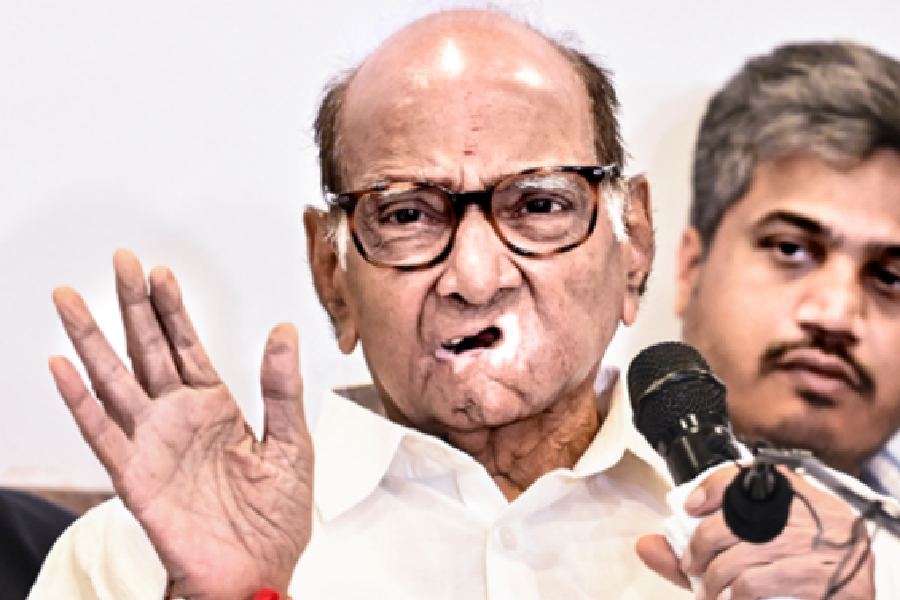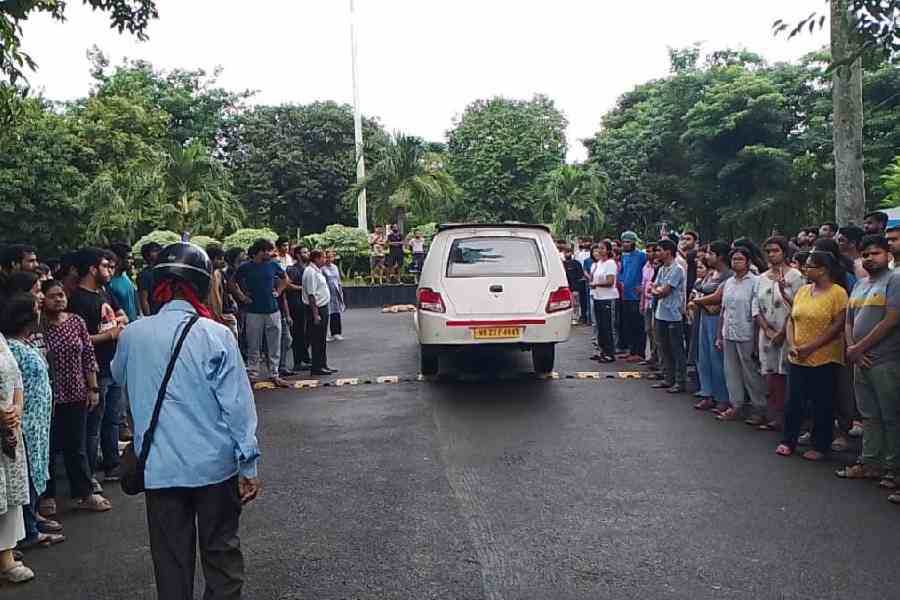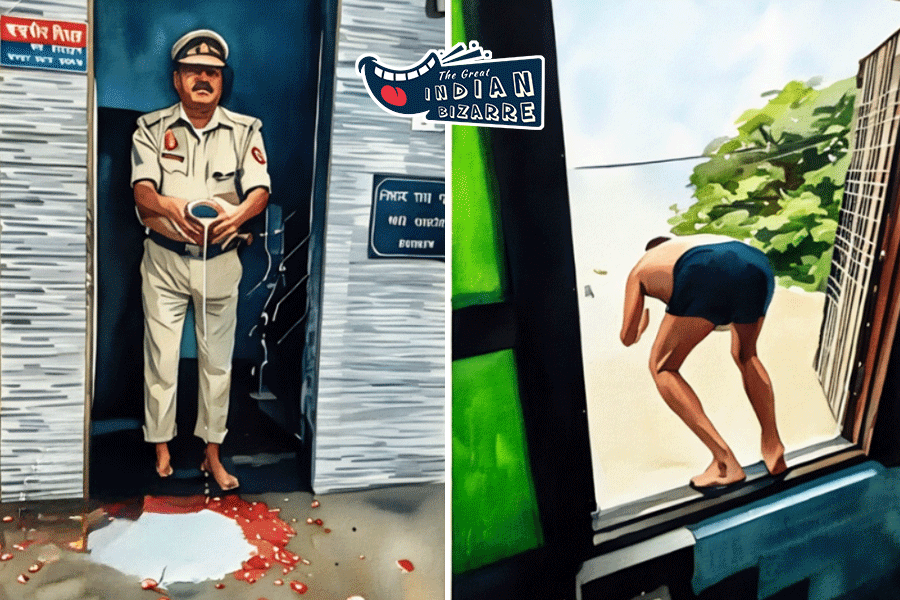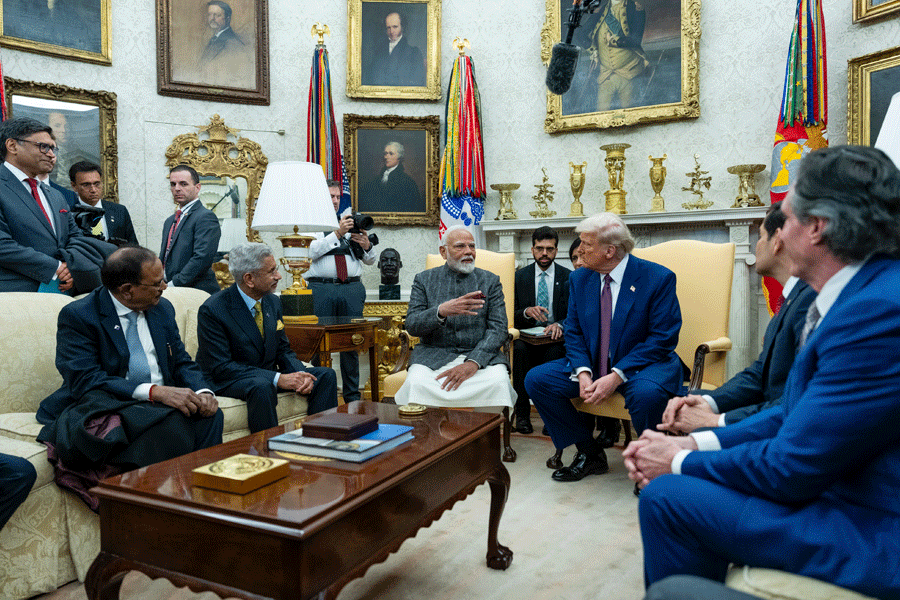 |
| Konkona in Shesher Kabita |
Suman Mukhopadhyay is spending most of his time in edit bays of studios, busy with the post-production work of Shesher Kabita and Kangal Malshat. t2 caught up with him at his Salt Lake residence on one of those rare days when he wasn’t working.
You’ve wrapped up Shesher Kabita. How did it go?
Well, it was a very different experience. The major part of the shoot took place in Shillong. We went in June for 22 days when it’s the peak of monsoon and on top of that we chose Cherrapunji as our location! It was kind of a suicidal attempt! The first five days were very depressing. It rained like crazy. Rahul (Bose) and Konkona (Sensharma) would rehearse before a scene and just when they would get ready for the actual shot, it would start raining. But finally we got what we wanted... interesting interplay of clouds, which is part of the creative and aesthetic look of the film.
 |
| Rahul and Konkona as Amit and Labanya |
I have never done this kind of a film before. Shesher Kabita is a love story but there are layers in it. It’s not just a simple romantic novel. It is very complex in terms of the characters. Whether it’s Labanya or Amit, both are very complex characters. So I had a lot of fun shooting the film.
Why Shesher Kabita? It has been attempted on screen only once....
Yes, Nirmal Kumar had played Amit in the film. But I didn’t see the film because I didn’t get a copy. I really wanted to see it. I’ve heard it was not a very successful film. Shesher Kabita the audio play was very successful. When I read Shesher Kabita in college it failed to impress me, honestly, but when I was in Berkeley in 2004 someone told me to re-read it. I did and while reading it I found a lot of interesting metaphors of contemporary life. I think the deeper recesses of the human mind are thoroughly explored in this novel and I re-explored it in my film.
 |
| Swastika, Chitrangada and Shreyosi |
I had adapted Tagore before (Chaturanga) but it was a lesser-read novel and highly philosophical. Shesher Kabita deals with human relations. It’s a simple love story and being a iconic novel in Bengali literature, it was a challenge to do Shesher Kabita because people have very specific opinions about the novel. The characters Labanya and Amit are so well-known that it is really a challenge to recreate them. People will obviously be curious how Shesher Kabita will be made. Besides, I have never done a complete love story, be it on stage or screen, so it was a new journey for me.
Have you taken liberties with the text?
I have kept it in the ’30s. I didn’t want to modernise it because the characters have a very specific base and I didn’t want to tamper with that. But the nuances, the characteristic complications, man-woman relationship, internal conflicts, and paradoxes are very contemporary. The intricacies of relationship, Labanya’s crisis and the final predicament that they together reach can very much happen today. Shesher Kabita talks about the eternal wisdom of human relations and that is contemporary and that is what I think people can relate to. I have also tweaked the dialogues keeping the flavour of the text so that today’s generation can understand it.
 |
| Kaushik and Kamalika in Kangal Malshat |
Amit and Labanya’s falling in love, their courtship days, their life is still so relevant. Amit is tremendously in love but Labanya realises that his love is actually with an imaginary woman. And that is why there’s so much resistance from Labanya. There is a crisis and whenever a man and woman are in a relationship these crises arise. Whether they stand and court under a tree or drive a 1930s car, shei garitar manusher modhye jei emotional interplay hochhe sheyta is very contemporary. Maybe they don’t have a mobile phone or are not exchanging SMSes but that’s not important. Certain elements in human nature are omnipresent. Fear, love, sense of failing... that’s why a classic remains a classic, that’s why Macbeth is still important because man’s greed for power still persists.
People have a certain image of Amit and Labanya. Will Rahul and Konkona fit into that?
When I read the novel I felt Amit is basically attractive because of his attitude. Rabindranath is describing him as ‘ujwal jyoti’. He might not be traditionally good-looking, like a six-footer and fair. I don’t look at him that way. His intellect was very attractive, his confidence and his awe-inspiring presence... he is someone who can argue on any matter and defy the norm. I think the attraction was beyond physical, it was more of an intellectual attraction. For Labanya, Rabindranath had mentioned that Amit has seen many a beautiful woman but Labanya is like daylight. So I never found her traditionally beautiful. She is so bright, sensitive and erudite that her beauty lies in these things.
According to me, Amit and Labanya are not traditionally beautiful people, that’s my interpretation of the novel. Their beauty comes from inside. But somehow Soumitra Chatterjee has done the audio play of Shesher Kabita and people have a mindset that Amit is as good-looking as him! But I don’t have to cater to that. My reading was more of the beautiful mind. Amit is not a Greek god and neither is Labanya a Greek goddess! Many people are not traditionally good-looking but more attractive than a usually handsome guy. That’s why I chose Konkona and Rahul.
Konkona was just fabulous. She, in fact, told me that of all the characters she has played so far she felt closest to Labanya. Rahul-er casting ta amar kachhe khub interesting mone hoyechhe because I wanted to use his kind of body language in the film. I had a problem with his hairstyle. He had a crew cut and I felt we should give him a wig. We got a very good wig-maker from Bombay but somehow the wig didn’t go with his face. And actually Amit je dhoroner character, I mean his idiosyncrasies, his attempt to be different, which is the crux of this character, that has worked.
The others — Swastika (Mukherjee, as Katy), Shreyosi (as Lisi), Chitrangada (as Sisi), Debdut (Ghosh as Sovanlal) are also very good.
Let’s come to Kangal Malshat now. You’ve done it for stage. How different was it adapting it on screen?
Very different. On stage, the perception of reality is very different. If I have to show a man flying, he just has to spread his arms. Theatrical reality is so different from cinematic reality. The script is totally different from the one that I had for stage. Lots of characters which weren’t there on stage are there in the film. It’s like two different takes on the novel. There is a lot of fun in the special effects because there are people flying. Unlike Shesher Kabita, Kangal Malshat was shot in the most obnoxious locations ever possible. In a pig sty, bathrooms... and there are too many cuss words! Kangal Malshat has an edgy look, edgy photography. It is the story of the downtrodden and hence very different from Shesher Kabita.
Kaushik Ganguly plays the lead role. Kabir Suman is Dandobayush, the dead crow who is like a wisdom guru. He really got into the skin of the character. His lines are very anti-establishment, anarchic, which goes with his image. I don’t want to reveal his look just as yet. Kamalika Banerjee has an important role.
When do you start shooting Prince of Metiabruz, your take on Hamlet?
I will start shooting for it next year. I want Abhay Deol as the lead in the film. Talks are on, let’s see.
Tagore’s Char Adhyay in Hindi is your next stage production...
Yes, Jaya Seal Ghosh will play Ela. Yama Shroff has translated it in Hindi.
Kushali Nag
Which of Suman’s two films are you looking forward to more? Tell t2@abp.in











